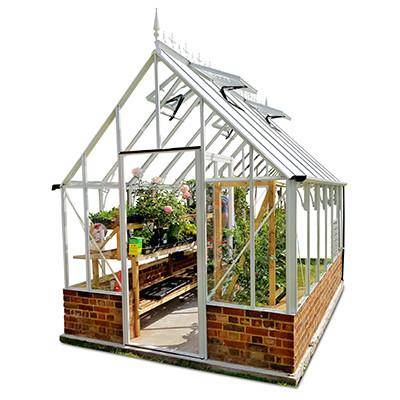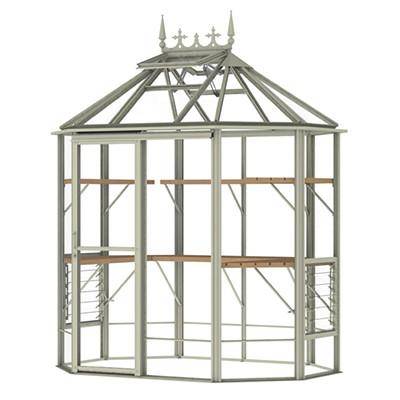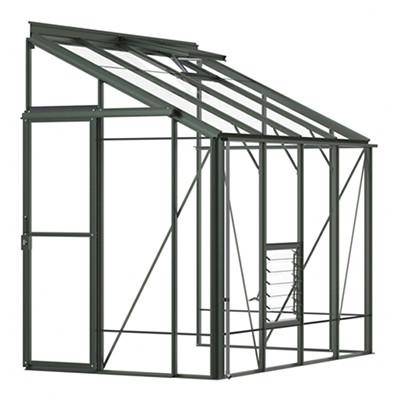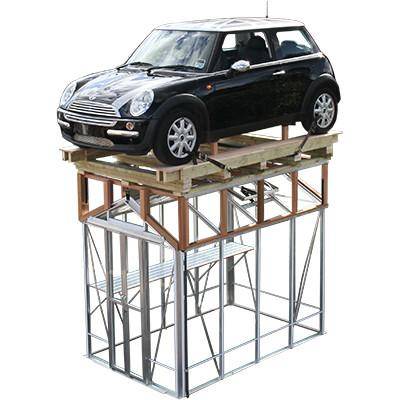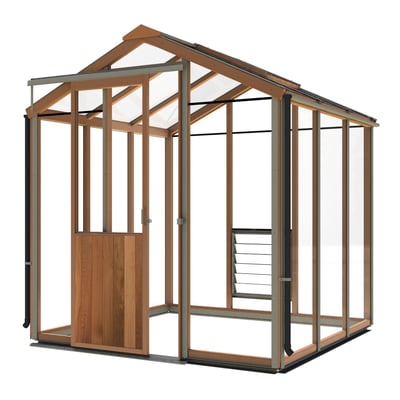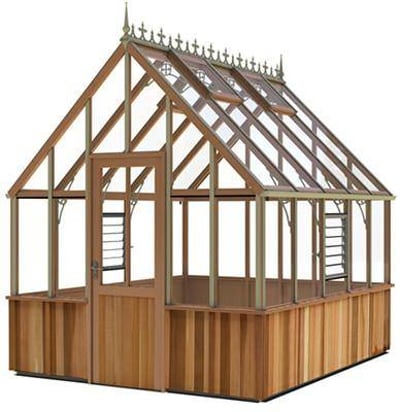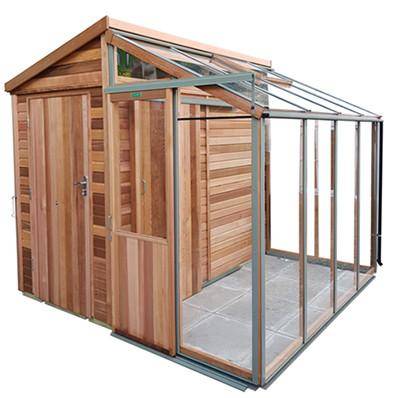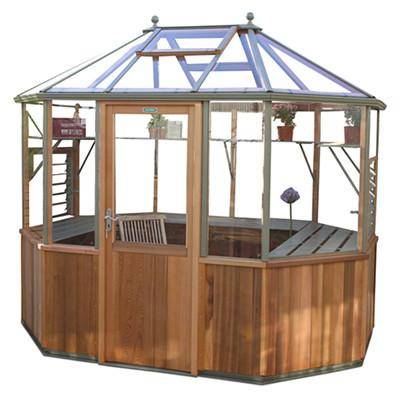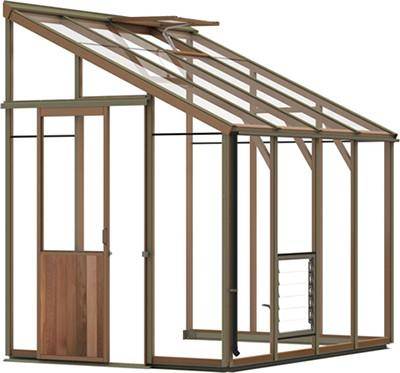4. Buyers Guide - Other accessories you should consider
Once your greenhouse has been installed, there is a host of practical accessories to consider, to make your growing experience both easier and more enjoyable.
Staging
Staging is a must, and maybe a high level shelf would be useful, for additional storage and growing space. There are many styles to choose from: completely aluminium, slatted timber on aluminium, double tier, triple tier, free-standing, integral – where do you start?
Your choice may well be based on what brand greenhouse you are buying. Any greenhouse can take free-standing staging, but only the strong premium brands like Robinsons, Alton and Hercules can take the integral staging, with cantilevered supports bolted directly to the greenhouse frame. This is because they are designed with a frame strong enough to support the weight of both the shelf, and whatever (reasonable) weight you intend to add to it. This staging can also be set at any height you wish.
If you have a smaller greenhouse, where space is at a premium, we would recommend multi-leveled staging, to increase your growing capacity.
There are a variety of styles and sizes of freestanding staging and seed tray units available, depending on your need, but the depth will depend on the size of your greenhouse, and the space you have either side of the doorway. If you have a 12’ wide green house, you might consider having a run of staging along each side and a third run up the middle, to utilise the maximum space.
Water Collection
In these times of water metering and the cost involved, it is important to take advantage of those rainy days, and harvest this free, naturally occurring resource, by simply adding a down-pipe kit and water butt.
Rainwater is not only free from the salts and treatment chemicals of tap water; it is the perfect pH for your soil. So, a water butt will not only save you money in the long run, but your plants will be all the more healthy for it.
Heating
If you plan on extending your season and continuing to grow through the winter, you need to consider how you are going to heat your greenhouse and keep it frost free. There are many types of heater on the market, all at varying prices.
Fan assisted heaters are particularly good, as they move the heat around, preventing cold spots, moulds and fungus. They also have the benefit of being thermostatically controlled, so the cost of running can be kept down, as they only deliver heat as and when it’s needed. A 2.8kw heater is sufficient to heat up to an 8’x14’ greenhouse, or up to a 12’x20’ frost-free. Please bear in mind that most built in thermostats on heaters are not all that accurate. You might want to consider a separate thermostat, if accuracy is vital.
Another option is an electric tube heater, for low-level background heat, which are markedly cheaper than fan heaters. They aren’t controlled by a thermostat, and work at a low wattage, but are ideal for simple frost protection.
If, however, you don’t have a power supply in your greenhouse, you could opt for propane gas heaters, which again, may be thermostatically controlled, and also have slightly lower running costs. You will need to ensure that your greenhouse is ventilated, as gas heaters produce water vapour. The only downsides are the possibility of the gas running out, and the initial cost of the gas bottle (deposit.) Other than that, a 1.5kw model would be excellent for heating an 8’x6’ greenhouse, or for keeping an 8’x10’ frost free.
If you are really working to a budget, then perhaps a paraffin heater is your best choice. Depending on the size of your greenhouse, you may need more than one, but the units themselves are a fraction of the price of an electric or gas model. They are stand-alone heaters and can be positioned anywhere in the greenhouse, without trailing cables or gas pipes.
A single burner is sufficient to keep a 6’x8’ greenhouse frost-free, whereas a double burner could cope with an 8’x10’. Whilst they do give off some water vapour, which can encourage mould growth without sufficient ventilation, they also give off CO2, which will help with the growth of your plants. The real downside is that they require more maintenance, as they will need refilling every few days. Also, as they have no thermostatic control, you will have to keep checking the temperature.
Shading
Moving away from the cold of winter, to the hottest days of summer, when the sunlight is blazing down on your greenhouse roof. Whilst plants need light for photosynthesis (the production of nutrients from carbon dioxide and water) prolonged periods of excessive light, and therefore heat, actually shuts this process down, as the plant struggles to cool itself. Under such extreme conditions, the leaves of the plant may scorch. To avoid this, you might consider investing in shading, the most common of which is used externally. Made from polyethylene mesh, it is attached to the frame of the greenhouse with clips, to keep it secure.
Premium brands, such as Robinsons, Alton and Hercules greenhouses have the option of internal, ‘roller-blind’ style shading. Internal blinds offer the advantage that warmth is allowed through the glass, but the scorching direct sunlight is then diffused by the blind. Internal blinds are also protected from the wind, and therefore last longer.
Thermometers
Having looked at heating and shading, one important item to remember is the trusty thermometer, to check you are maintaining the correct all year round temperature.
There are many models on the market: liquid filled tube display (alcohol replacing mercury), the analogue dial variety, as well as the more up to date LCD display models. Most also record the minimum and maximum temperature. Others have an external probe so that you can measure both inside and outside the greenhouse.
Whilst they all come at varying prices, they are absolutely essential, especially when setting heater thermostats.
Check the accessories option, in the menu bar at the head of this page, for a wide range of additional tools and equipment, to help with your new greenhouse experience.


